index
I. INTRODUCTION
The Kokedama is a unique way of displaying plants that originated in Japan. This enchanting technique involves the creation of living spheres, where the roots are wrapped in moss. With deep roots in Japanese traditions, Kokedama combines aesthetics and practicality, providing an innovative and elegant way to display nature indoors and outdoors.
A Brief Explanation of Kokedama
The term Kokedama literally translates as “moss ball”. These botanical spheres not only add a unique aesthetic to spaces, but also offer a creative approach to growing plants. The technique provides a visually appealing experience, connecting to nature in a unique way.
Japanese origins of the technique
The Kokedama has its roots in Japanese gardening traditions, as a variation of bonsai. The practice reflects the harmony between man and nature, seeking balance and simplicity. This cultural heritage gives Kokedama a special depth, making it more than just a display of plants.
The Aesthetics and Practicality of Kokedama
In addition to its visual beauty, Kokedama offers a practical solution for those who want to integrate nature into limited spaces. The hanging spheres save space and add a contemporary touch to any environment. Kokedama’s versatility allows for a variety of plants, providing a touch of green indoors or out.
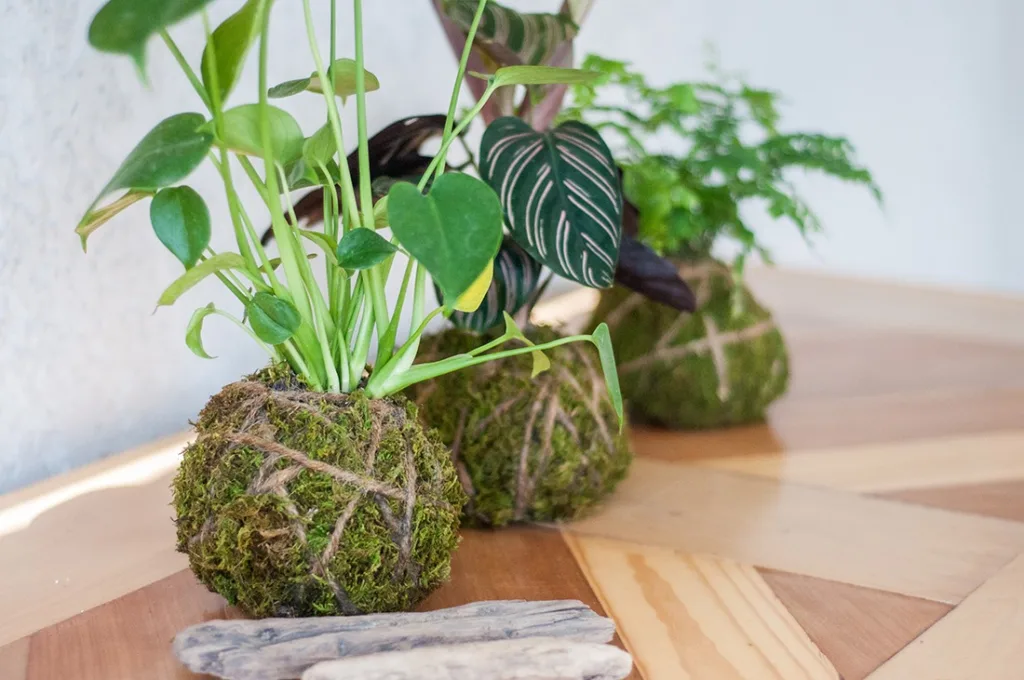
II. What is Kokedama?
Discover more about the unique art of Kokedama, from its definition to the essential elements that make it such a captivating technique.
Definition and meaning
Kokedama refers to a Japanese technique of gardening where the roots of the plant are wrapped in a sphere of moss. The word “Kokedama” literally translates as “moss ball”. These living spheres offer a unique and visually striking way of displaying plants.
Essential Elements: Plant, Moss, Substrate
The main elements for creating a Kokedama include:
- Plant: Choose a plant suitable for the desired environment. Succulents, ferns and ivy are popular options.
- Moss: Moss, preferably sphagnum moss, is used to wrap the roots, providing support and moisture.
- Substrate: The soil mixture should be well balanced, providing nutrients and adequate drainage for the plant.
Comparison with other forms of plant display
Unlike traditional pots, the Kokedama stands out for its unique approach. Compared to other forms of plant display, such as hanging pots or vertical gardens, Kokedama offers a more natural and organic aesthetic, bringing a unique sense of botanical harmony to the environment.

III. Step by Step to Create Kokedama
Explore the fascinating process of creating your own Kokedama with this step-by-step guide. Find out how to choose the right plant, prepare the soil and shape the moss sphere.
Choosing the right plant
Before you start, it’s crucial to select the right plant for your Kokedama. Consider the environment in which the Kokedama will be displayed and choose a plant that adapts to the light and humidity conditions there. Succulents, ferns and resistant indoor plants are popular choices.
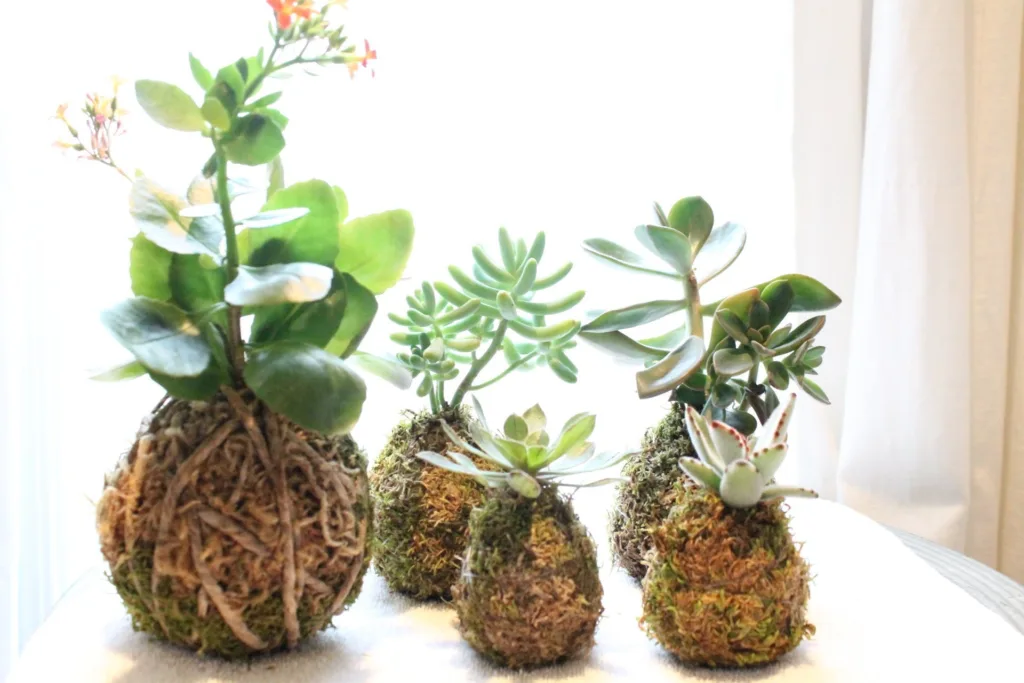
Preparing the Soil Mix
The soil mix plays a vital role in the success of your Kokedama. Create a balanced mix that provides the necessary nutrients and allows for good drainage. Use a combination of potting mix, peat and perlite to create an airy, nutritious soil.
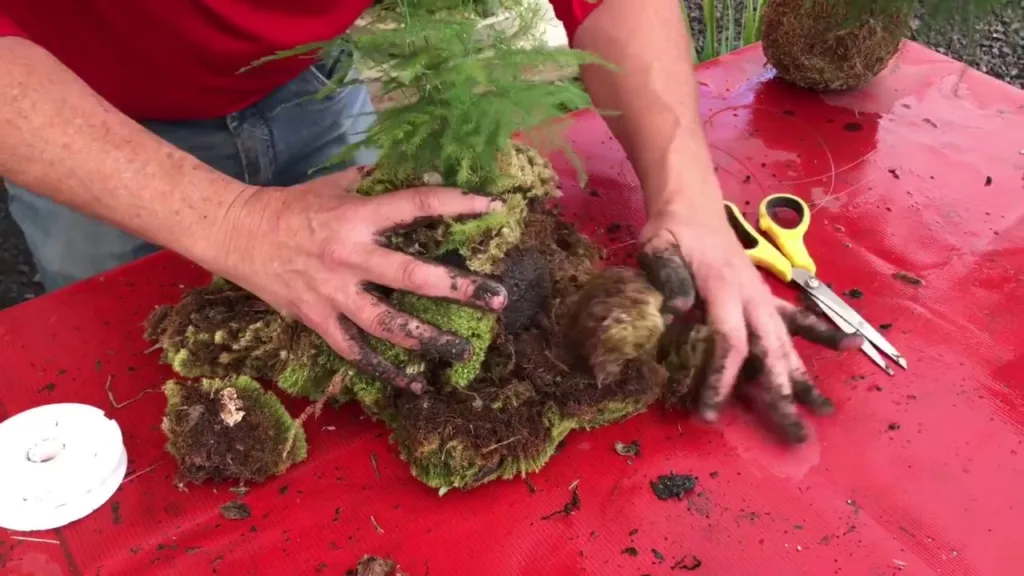
Molding the Moss Sphere
With the plant chosen and the soil mixture prepared, it’s time to shape the moss ball. Wet the sphagnum moss and place it on a flat surface. Place the soil mixture on top of the moss and wrap around the roots of the plant, forming a compact sphere.
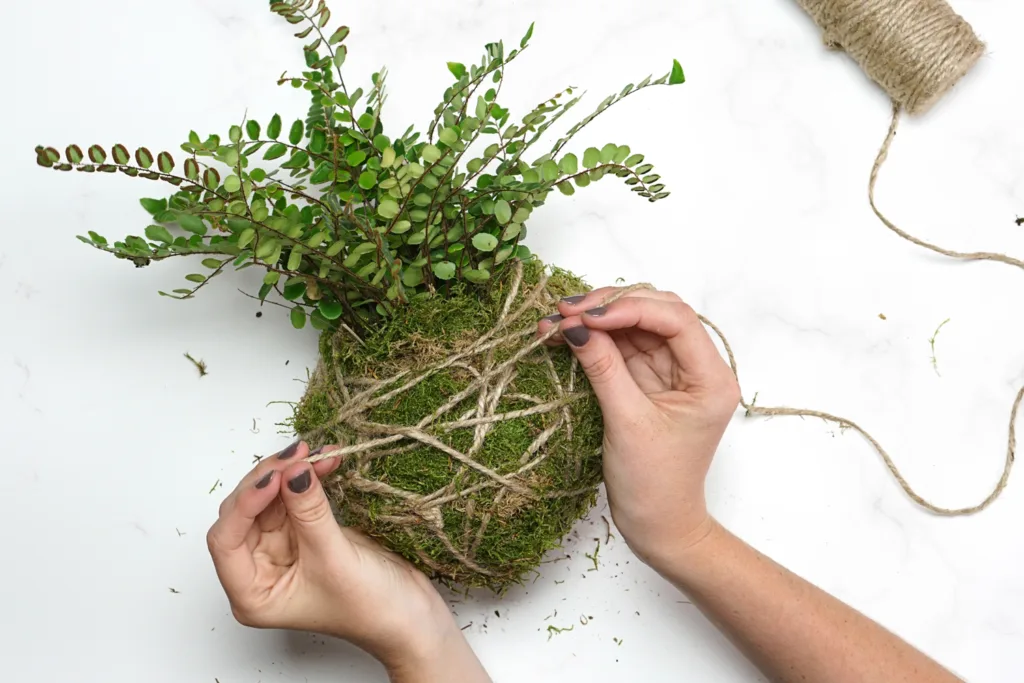
Wrapping and Care
Wrap the sphere with cotton thread or sturdy string, ensuring that the moss stays firmly in place. Once complete, water the Kokedama generously and place it in the desired location. Maintain a regular watering schedule, ensuring that the sphere remains moist but not soggy.
Follow these simple steps and create your own Kokedama, adding a unique piece of nature to your home or garden.
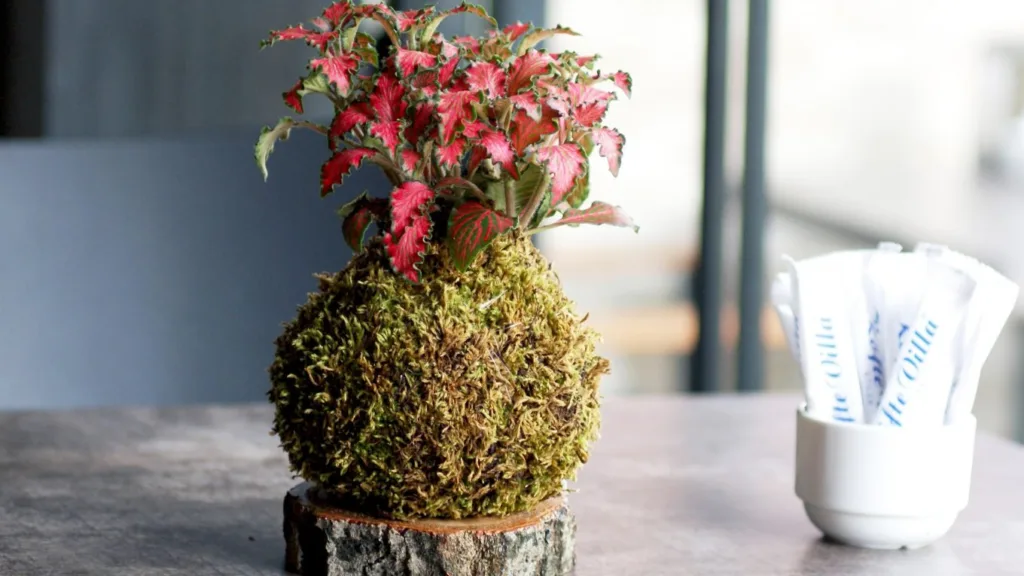
IV. Varieties of Plants for Kokedama
Discover the many plant options that are perfectly suited to the Kokedama technique. From suggestions for indoor environments to considerations about the size and type of plant, explore the variety that Kokedama offers.
Ideal plants for Kokedama
Choosing the right plant is essential for the success of your Kokedama. Some ideal options include:
- Succulents: Resistant and adaptable to different conditions.
- Ferns: Ideal for humid and shady environments.
- Hera: It adapts well to interiors and creates a lush appearance.
Suggestions for indoor and outdoor environments
When selecting plants for the Kokedama, take into account the specific conditions of the environment. For indoor environments, opt for plants that tolerate indirect light and drier environments. For outdoor spaces, choose plants that are more resistant to direct sunlight and variable weather conditions.
Plant Size and Type Considerations
The size and type of plant will determine the aesthetics and maintenance of your Kokedama. Consider:
- Small plants for smaller Kokedamas.
- Slow-growing plants to reduce the need for replanting.
- A variety of colors and shapes for a visually interesting display.
Explore the diversity of plants available and create customized Kokedamas for each space, adding a unique and natural touch to your decor.
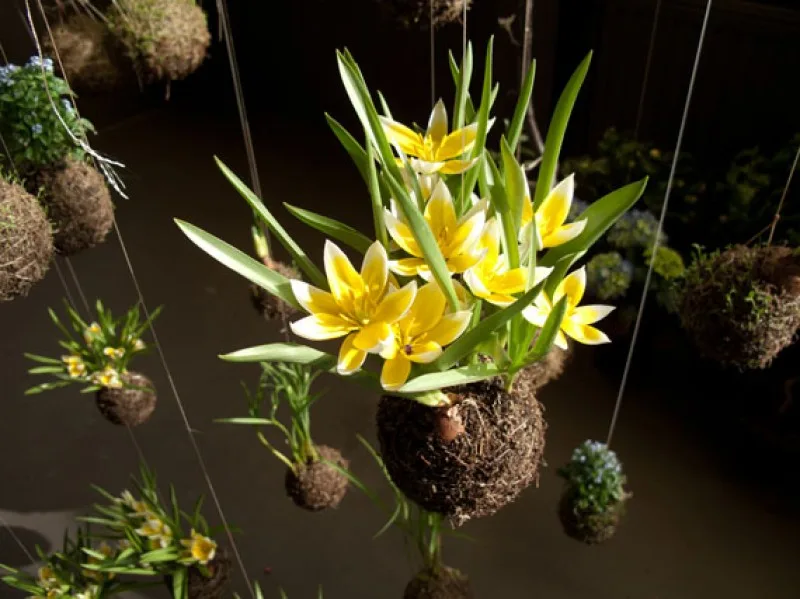
V. Maintenance Tips
Keep your Kokedamas healthy and lush with these essential care and maintenance tips. Find out how to water correctly, position ideally and solve common problems.
How to Water and Care Properly
Watering: Monitor the humidity of the Kokedama and adjust the frequency of watering as necessary. Make sure that the moss ball is evenly moist, avoiding both dryness and excess water.
Nutrition: After watering, provide the plant with additional nutrients. Use a balanced fertilizer to maintain health and vitality.
Pruning: Carry out regular pruning to control growth and maintain the desired shape. Remove dead leaves and stems to stimulate healthy growth.
Ideal positioning for Kokedamas
Light: Consider the light requirements of the chosen plant. Position the Kokedamas in places that offer the right amount of natural light, either indirect light for shade plants or direct light for plants that prefer full sun.
Environment: Keep the Kokedamas in environments suitable for the plants selected. Some prefer humid environments, while others thrive in drier conditions.
Solutions to common problems
Color Change: If the leaves are changing color, adjust the light exposure. Yellowish leaves may indicate too much light, while darker leaves may signal the need for more light.
Pests: Monitor your Kokedamas regularly for signs of pests. Treat infestations quickly with natural methods or plant-specific products.
Follow these maintenance tips to ensure that your Kokedamas continue to be a vibrant and charming addition to your space.
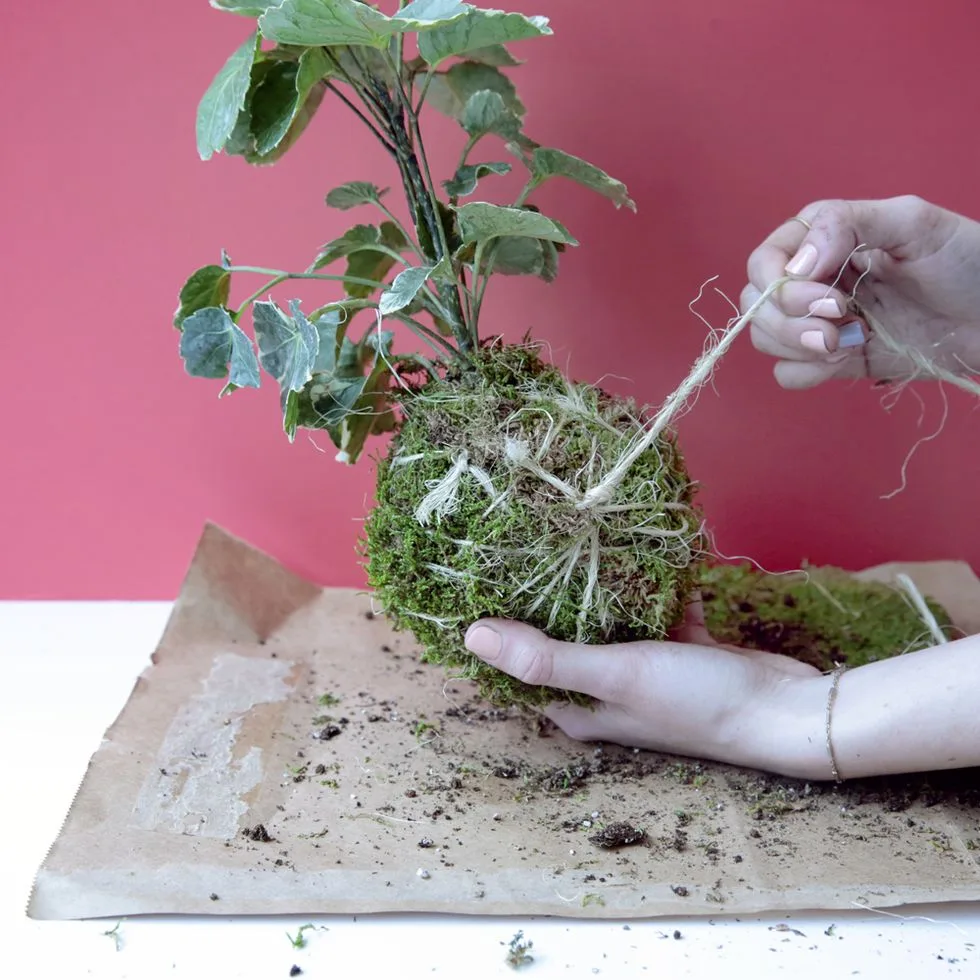
VI. Benefits of Kokedama
Discover how Kokedamas go beyond aesthetics, offering a range of benefits for your environment and well-being. Explore the positive impact on aesthetics, the therapeutic benefits of gardening and the sustainable connection with nature.
Positive Impact on the Aesthetics of the Environment
Unique Decoration: Kokedamas provide a unique and attractive decoration, adding a natural and artistic touch to any space.
Versatility: With a variety of plants and Kokedama styles available, you can customize the decoration to suit your taste and decorating style.
Therapeutic Benefits of Gardening
Mental Well-Being: Gardening is known to have positive effects on mental health. Kokedamas offer an affordable and enjoyable way to engage with nature.
Stress Reduction: Caring for plants, including Kokedamas, can help reduce stress levels and promote a peaceful environment.
Sustainability and Connection with Nature
Efficient Use of Resources: Kokedamas use less soil than traditional potted plants, making them a more sustainable option.
Daily Connection with Nature: By bringing nature into the home, Kokedamas provide a daily connection with natural elements, even in urban environments.
Enjoy not only the visual beauty of Kokedamas, but also the tangible benefits they offer for your space and well-being.
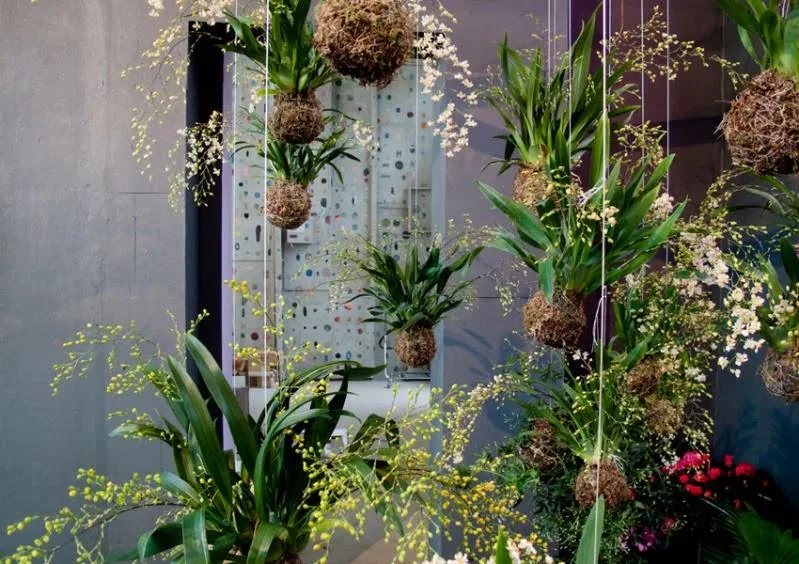
VII. Conclusion
Explore the unique art of Kokedama and its ability to transform environments. Let’s recap the main points and invite you to try it out and share this unique experience.
Recap of the Main Points about Kokedama
- Japanese technique: Kokedama, which originated in Japan, stands out for its unique aesthetics and versatility.
- Variety of Plants: Discover the diversity of plants that adapt to this technique, providing options for all tastes.
- Simplified Maintenance: Kokedama is easy to maintain, offering a practical and aesthetically pleasing alternative to traditional cultivation.
Invitation to Experiment and Share Experiences
Feel inspired to create your own Kokedamas and incorporate them into your life. Share your experiences on social media using the hashtag #KokedamaArt and inspire other gardening enthusiasts.
Links to Additional Resources and Tutorials
Explore more about the world of Kokedama with additional resources and tutorials. Find step-by-step guides, care tips and inspiration to improve your gardening skills.
Not just a gardening technique, Kokedama is an artistic expression that elevates the environment and provides a unique connection with nature. Try it out and immerse yourself in the fascinating universe of Kokedama!
Frequently Asked Questions
What do you need to make kokedama?
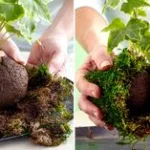
To create a kokedama, you’ll need a few basic materials and follow a simple process. Here’s what you need:
Soil mix: Usually a combination of bonsai soil, orchid substrate and sphagnum moss.
Sphagnum moss: To wrap around the roots of the plant.
Barb or cotton thread: To tie the moss around the roots.
Plants: Choose plants that adapt to the desired environment for the kokedama.
What is kokedama and what is it for?
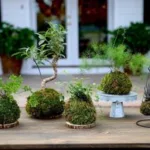
Kokedama is a Japanese gardening technique in which the roots of a plant are wrapped in moss and tied with string to create a suspended green sphere. These spheres are both an art form and an aesthetically pleasing alternative to traditional methods of growing potted plants. Kokedamas are used to:
1. Add a unique piece of green decoration indoors.
2. Create a closer connection with nature.
3. Offer a versatile gardening option that can be displayed in a variety of ways.
How long does kokedama last?
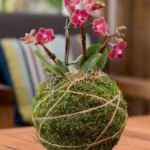
The durability of kokedama depends on various factors, such as the type of plant chosen and the care given. On average, a well-maintained kokedama can last from several months to years. Some tips for prolonging the life of kokedama include:
1. Monitor the humidity of the moss and water it properly.
2. Provide the right amount of light for the plant.
3. Replant when the roots start to grow beyond the moss.







